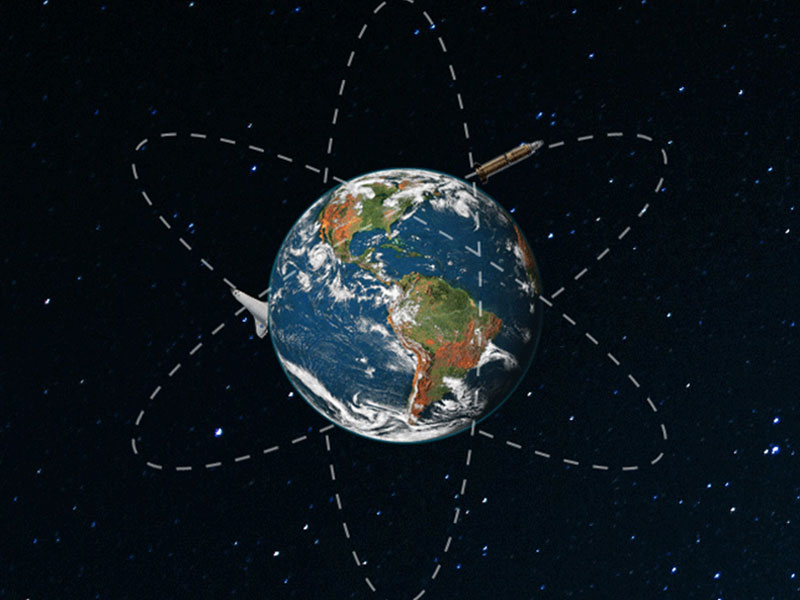
In the early Sixties, America was mired in earthly miseries threatening its future, from deep-seated segregation in the heartland to a seemingly unending power struggle with the Soviet Union. Despite the tumult, it managed to set optimistic sights on outer space. In 1961 Al Shepard became the first American to dip a toe into the eerie abyss, and a year later, John Glenn planted a solid footing as the first American to orbit Earth. With Glenn’s recent passing, many people are wondering what life must have been like as a space pioneer during the Cold War — to be catapulted into the unknown equipped with prototype rocket science and the hefty weight of a country’s expectations. As one of the chosen few to cross the terrestrial threshold and catch a glimpse of the planet he calls home thousands of miles up in the stratosphere, Glenn brought back a unique vantage point that helped secure our fragile world.
Sixteen years after his space ride, Glenn as Senator of Ohio served as chief architect and advocate of the 1978 Nuclear Non-Proliferation Act to help prevent the use of nuclear materials for nuclear weapons. By then, about 100 countries had already joined the Treaty of Nuclear Non-Proliferation, an international pact that, among other commitments, bound states to forego any aspirations to acquire nuclear weapons in exchange for access to nuclear materials and technologies for peaceful use. The Nuclear Non-Proliferation Act outlined how the United States would reinforce this grand bargain, mainly that it will assure adequate supply of nuclear fuel to countries that abide by non-proliferation policies, such as implementing full-scope safeguards to verify that nuclear materials are indeed used with peaceful intentions. Overall, the Act attempted to create a framework in which the United States, as a reliable nuclear supplier, could cooperate with countries eager to benefit from the nuclear fuel cycle without the danger of diverting material for military projects. The Act was critiqued for its grandiose visionand until this day has yet to fulfill all of its objectives; since the passage of the Act, the United States has struggled to keep apace with other formidable nuclear suppliers, and several non-nuclear weapon states went on to pursue nuclear fuel cycle technologies on their own. Still, it is considered as a cornerstone of American nonproliferation policy as it developed a strong set of conditions for nuclear exports and bilateral civil nuclear cooperation.

The Nuclear Non-proliferation Act fundamentally recognizes the delicate balance between achieving technological progress and firing up the gears of war. Since the dawn of time, humanity’s talent for innovation and invention had the potential to unlock its collective well-being or demise. The lever powered the crossbow, fire paved way to concoctions of gunpowder. Scientists throughout history have lamented the application of science for war — Leonardo Da Vinci decided to keep his submarine designs secret from “the evil nature of men”, while a group of Manhattan Project physicists called into question the morality of using the atomic bomb soon after developing it. The space race between the United States and Soviet Union is no different; the success of putting Sputnik into space in 1957 signaled that the Soviets were close to developing intercontinental ballistic missile capabilities that could reach U.S. territory. John Glenn’s mission was more than the excavation of the heavens, but to chase after technology needed to perfect our ammunition against its foes.
It is this pattern of science for war that Senator Glenn tried to break in his policies. He was proud to lead the passage of the Nuclear Non-proliferation Act, despite other Congressional colleagues considered the issue a “MEGO item” (his shorthand for “my eyes glaze over”). Senator Glenn was also a relentless optimist; he supported bilateral arms reduction agreements with the Soviet Union, claiming that there are unexplored commonalities between the two nations that appeal to a shared desire for survival. In his remarks at the Ohio City Club in 1982, he summed up the reason for his longstanding commitment to nuclear issues: “we all inhabit the same small planet.”

It should be no surprise that one of the biggest nuclear nonproliferation and arms control champions was an astronaut. In fact, an astronaut whose innate optimism for mankind’s survival was so great that he returned to space 36 years later to contribute his aging body to scientific research, so that we know what will happen if we ever find ourselves among the stars during our graying days. Equal to his passion for the final frontier is his capacity to turn back and appreciate home — not just the United States, but planet Earth — because he understood that it alone holds everything that matters. While he gave America a competitive edge during the space and arms race, he also forced it to think long and hard about the outcomes of such ill-fated competition and the mutual destruction that waits. Only someone who had been literally out of this world can appreciate our vulnerable place in the universe, and recognize that we are the biggest threat to our collective security.
So as we look towards the future and embark on this quest to “make America great” by making new gadgets and braving new frontiers, we must not forget John Glenn’s work to avoid nuclear war. There is no point shooting for the stars, if we do not have a home — our spaceship Earth — to keep us grounded, keep us whole.

